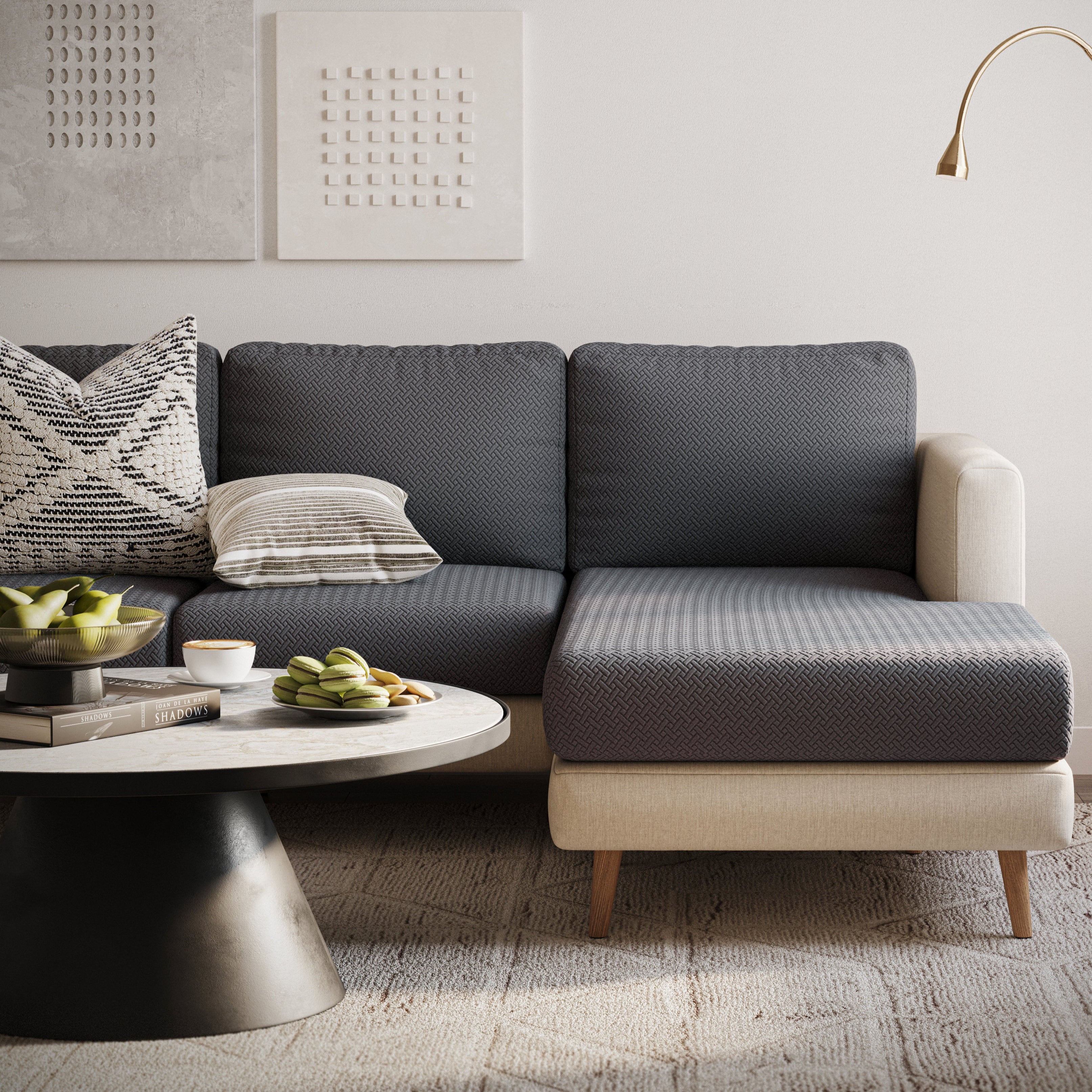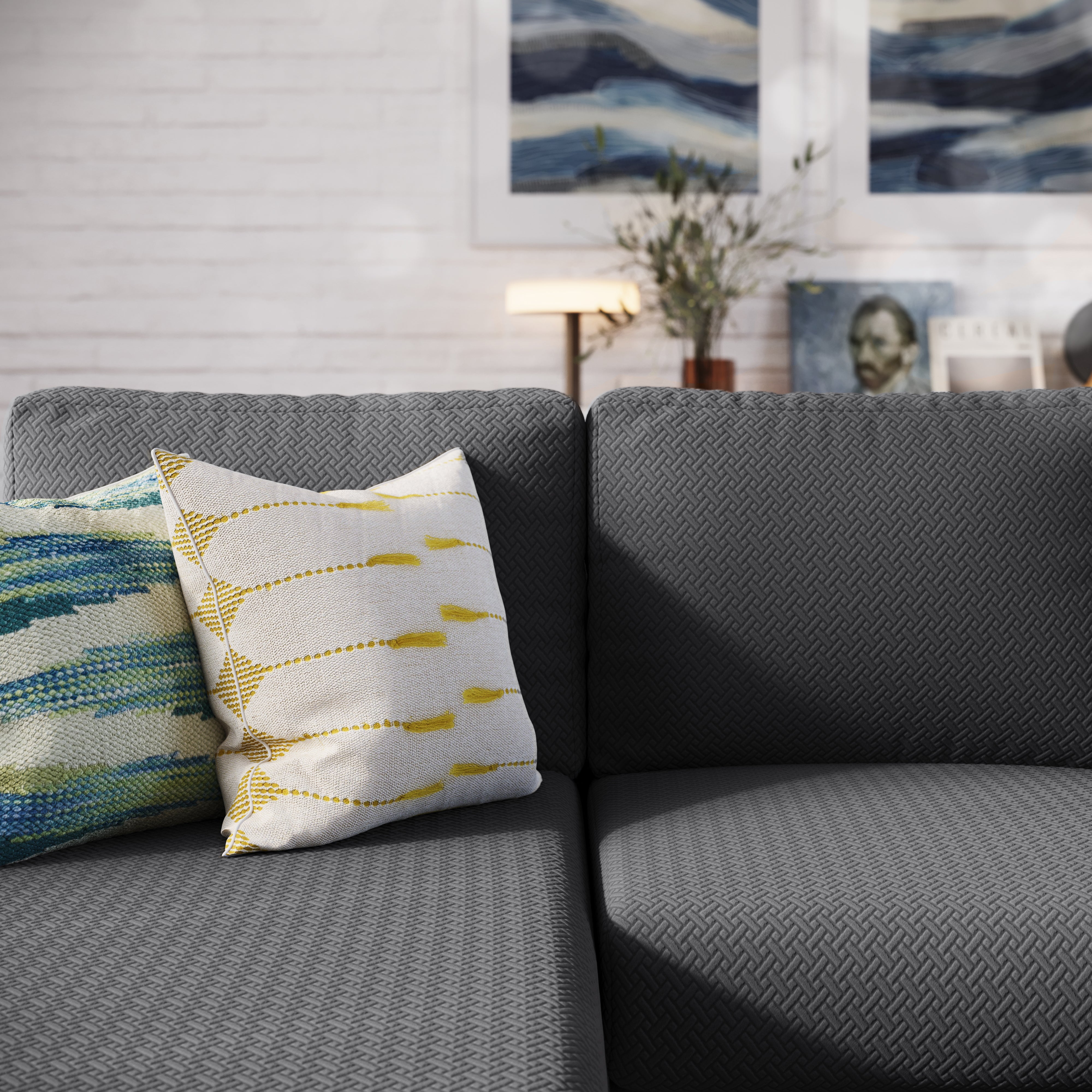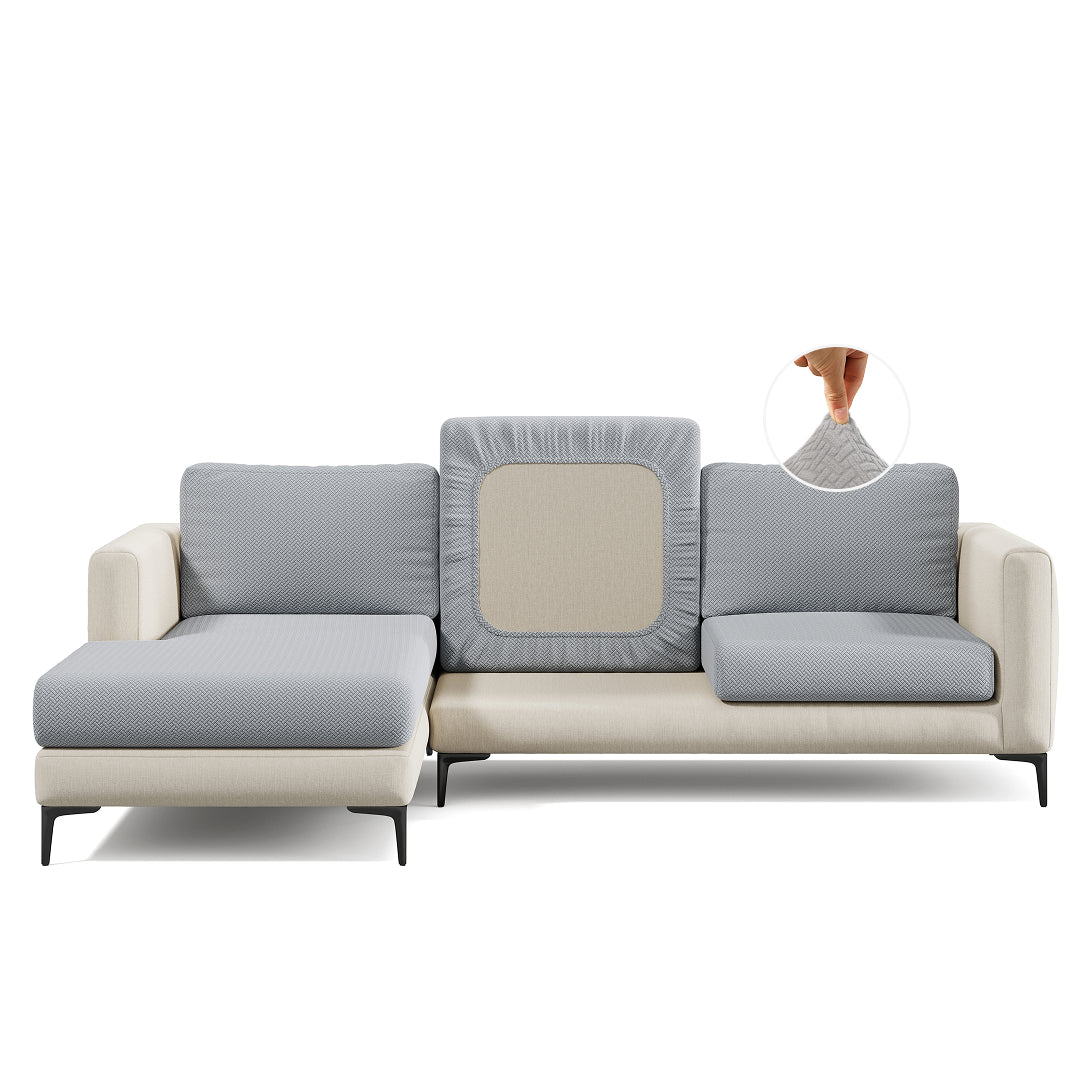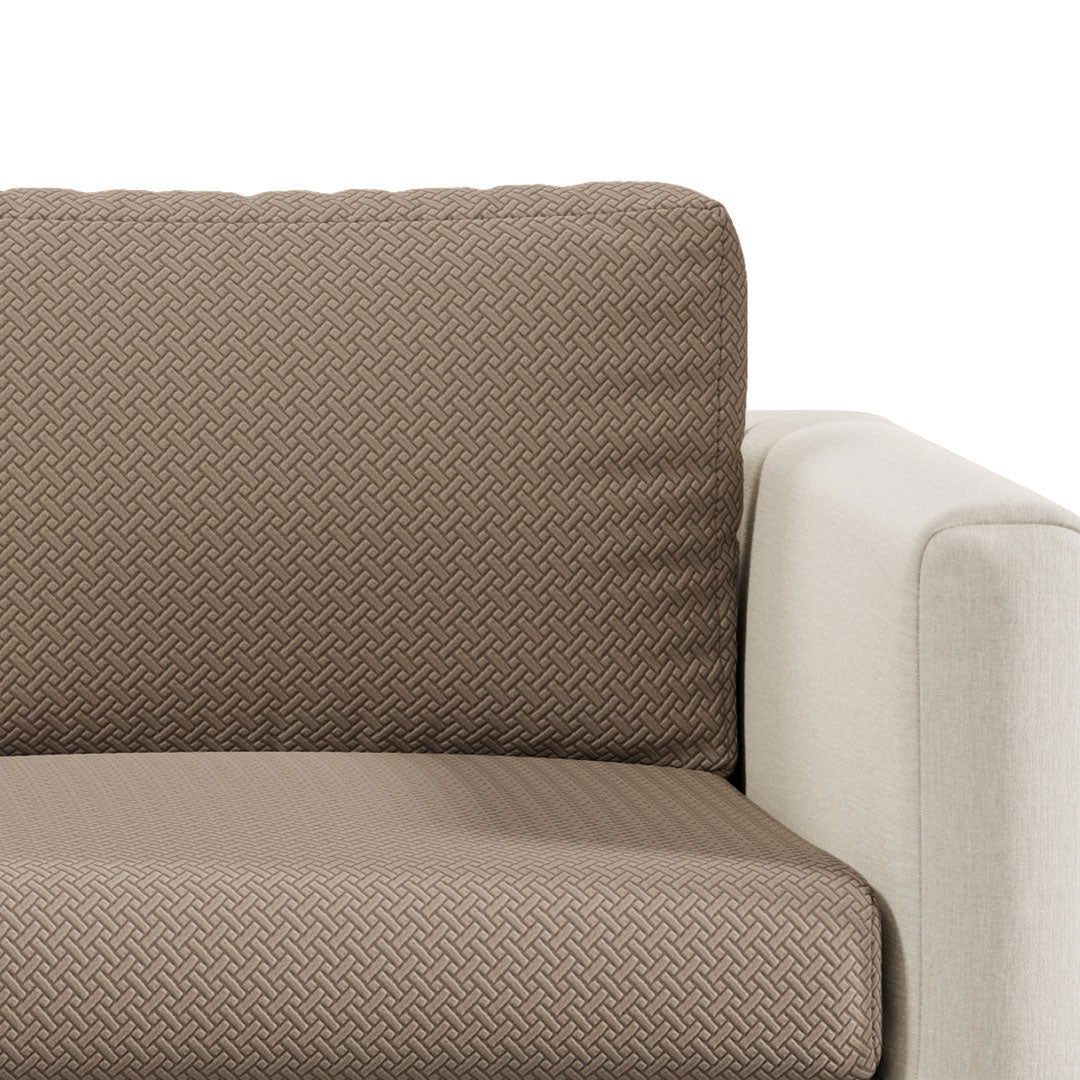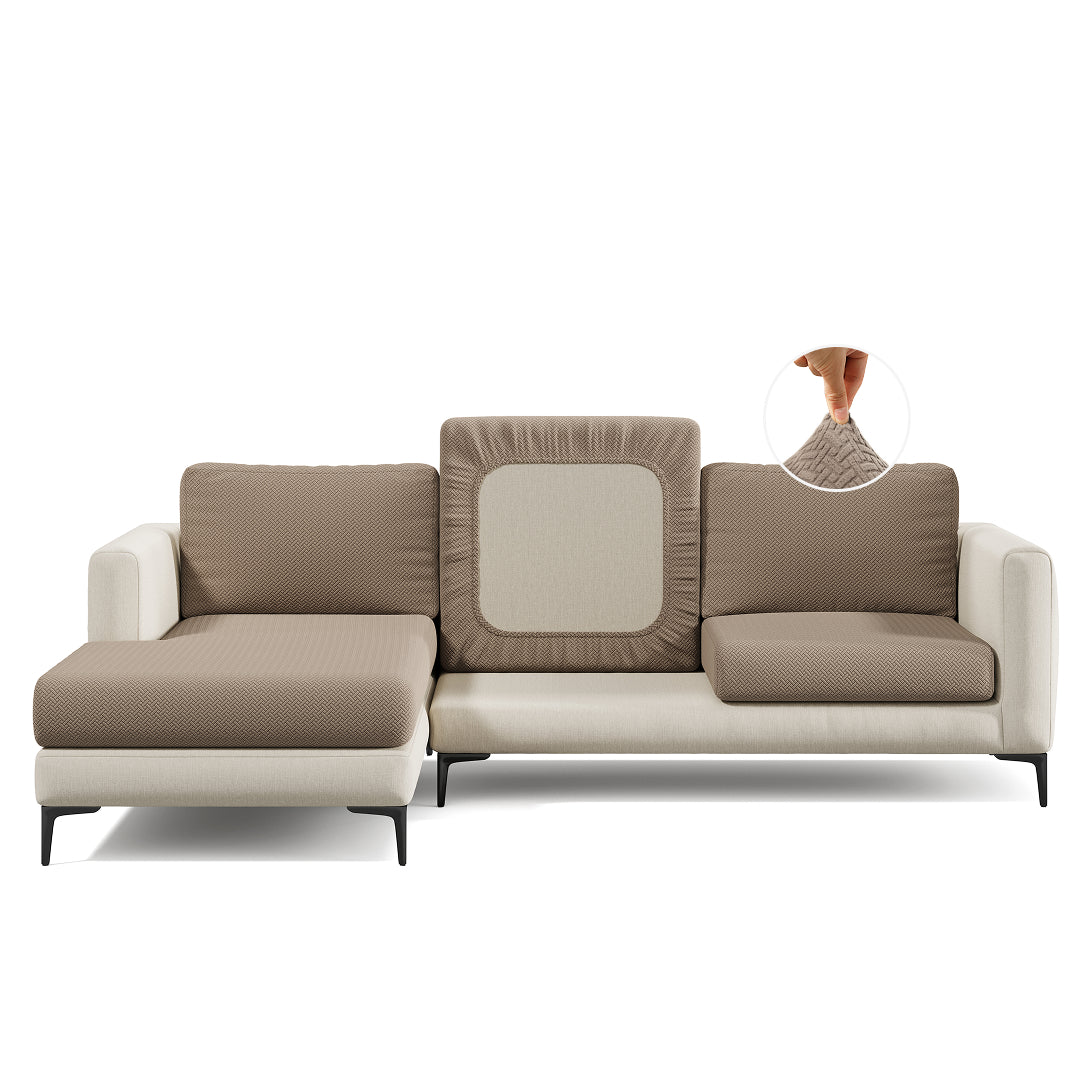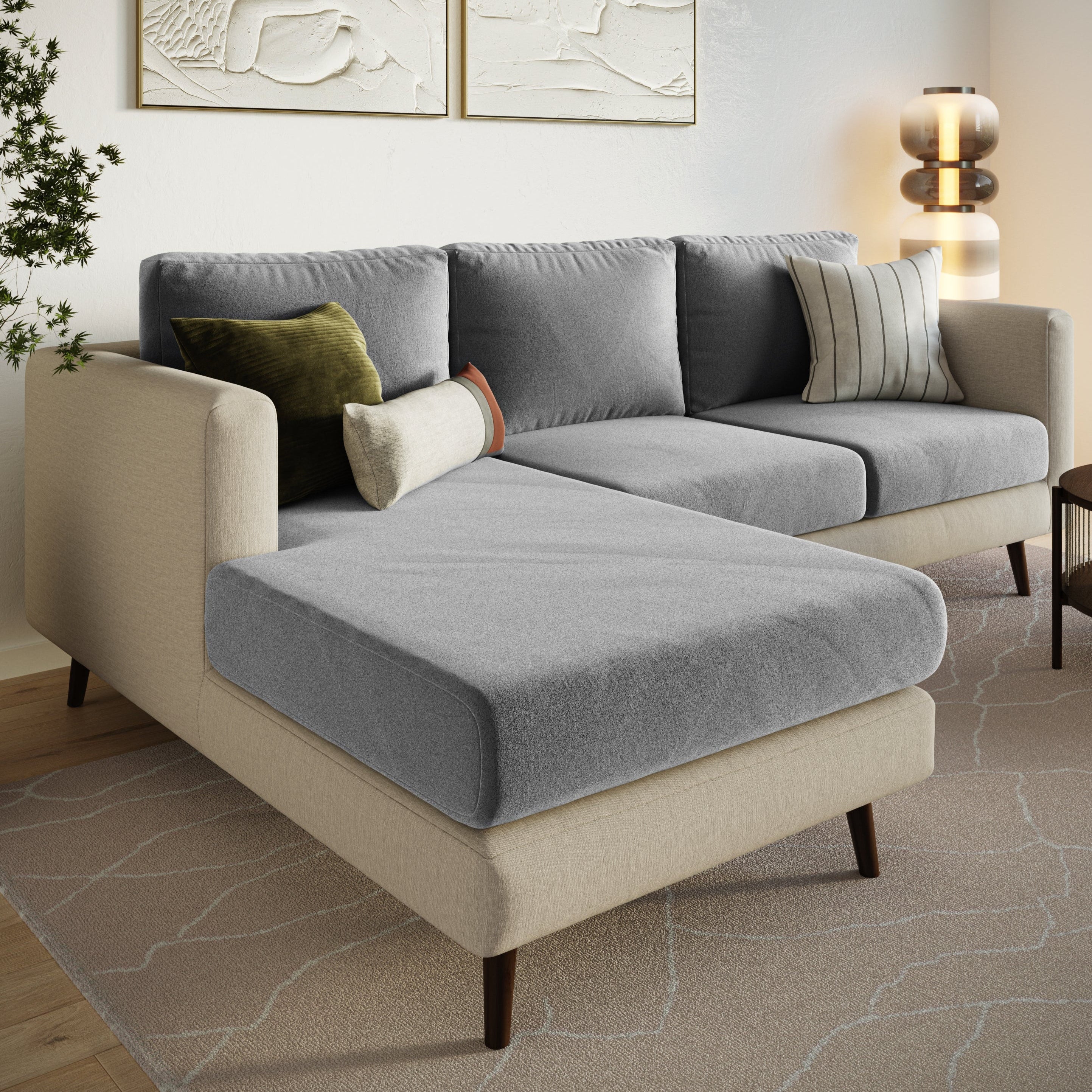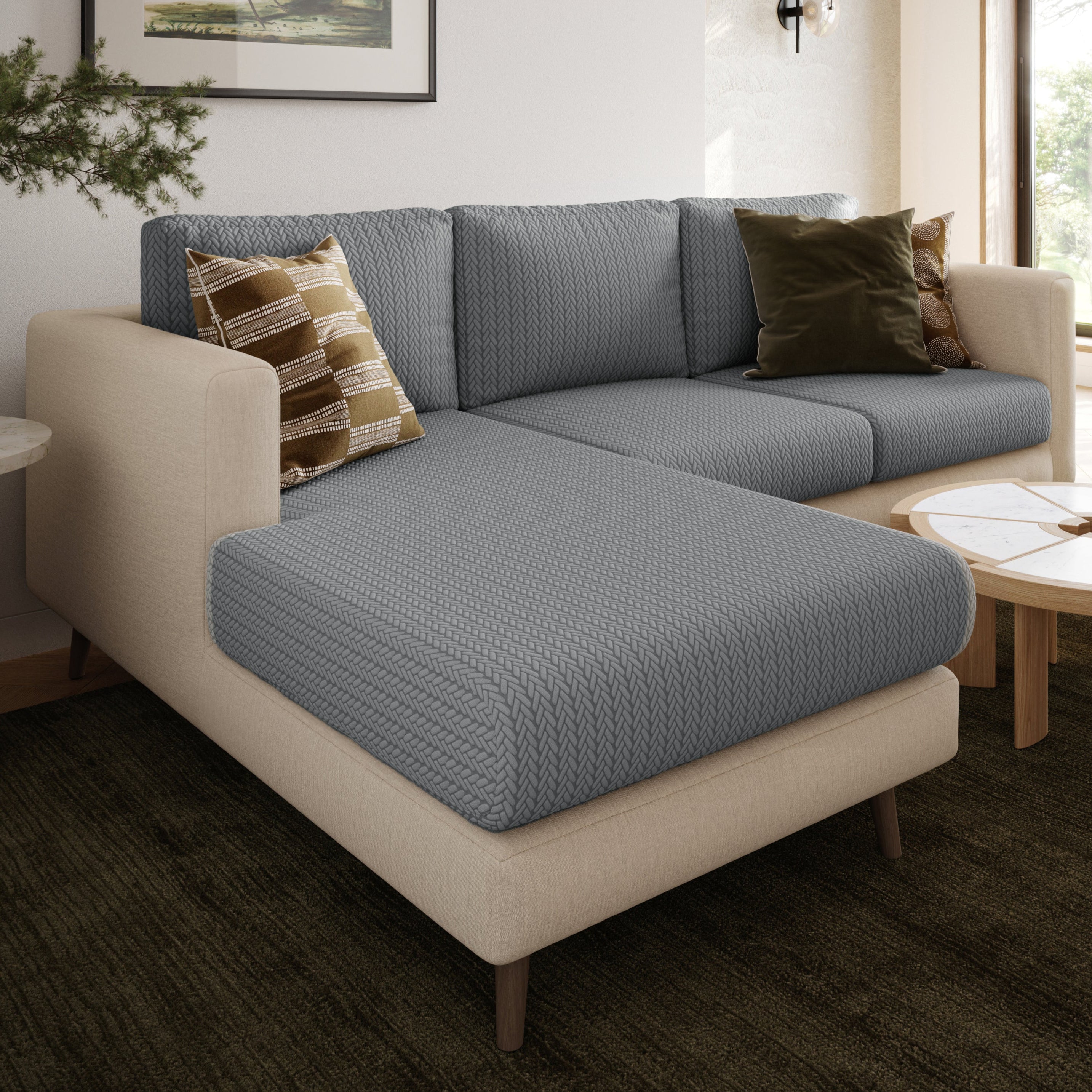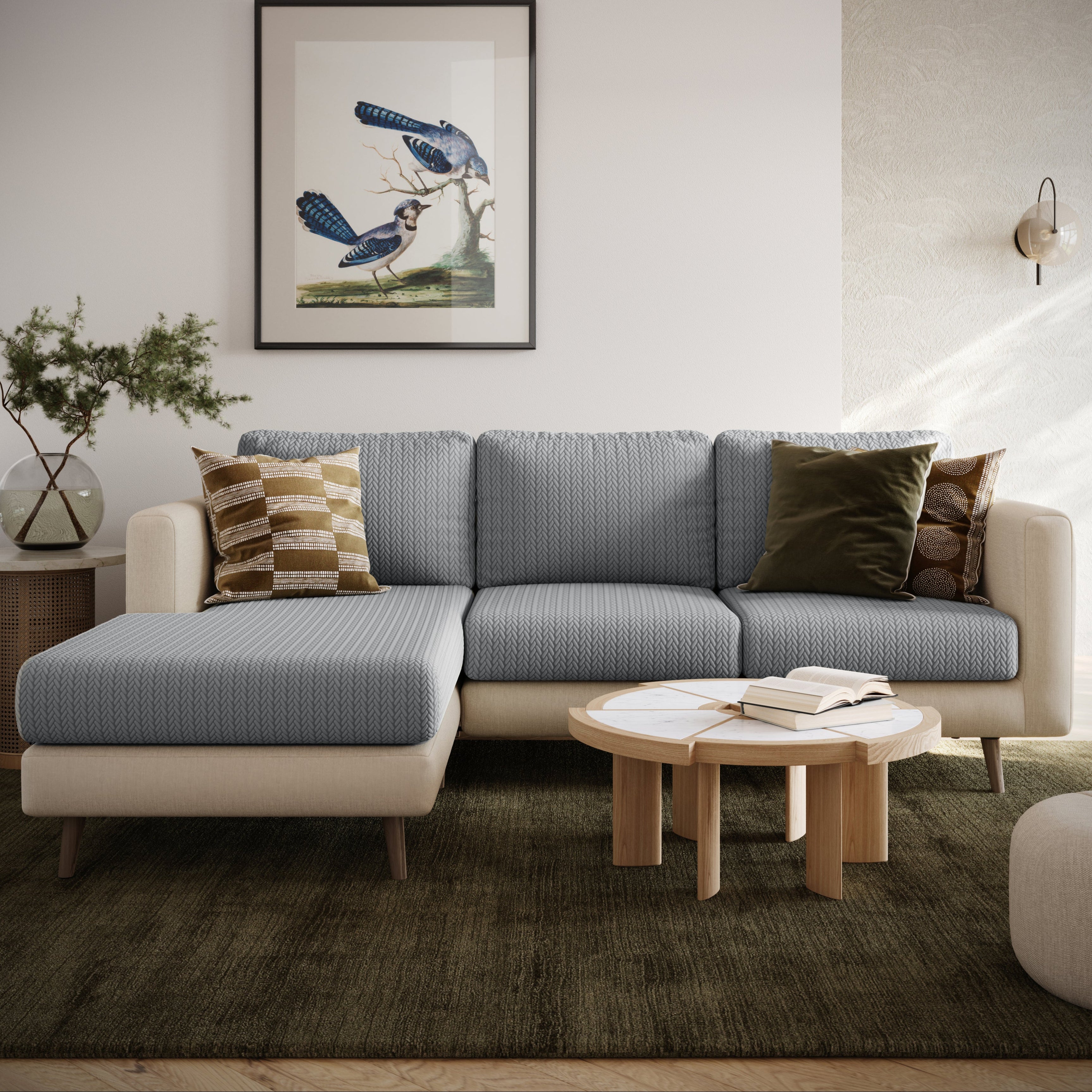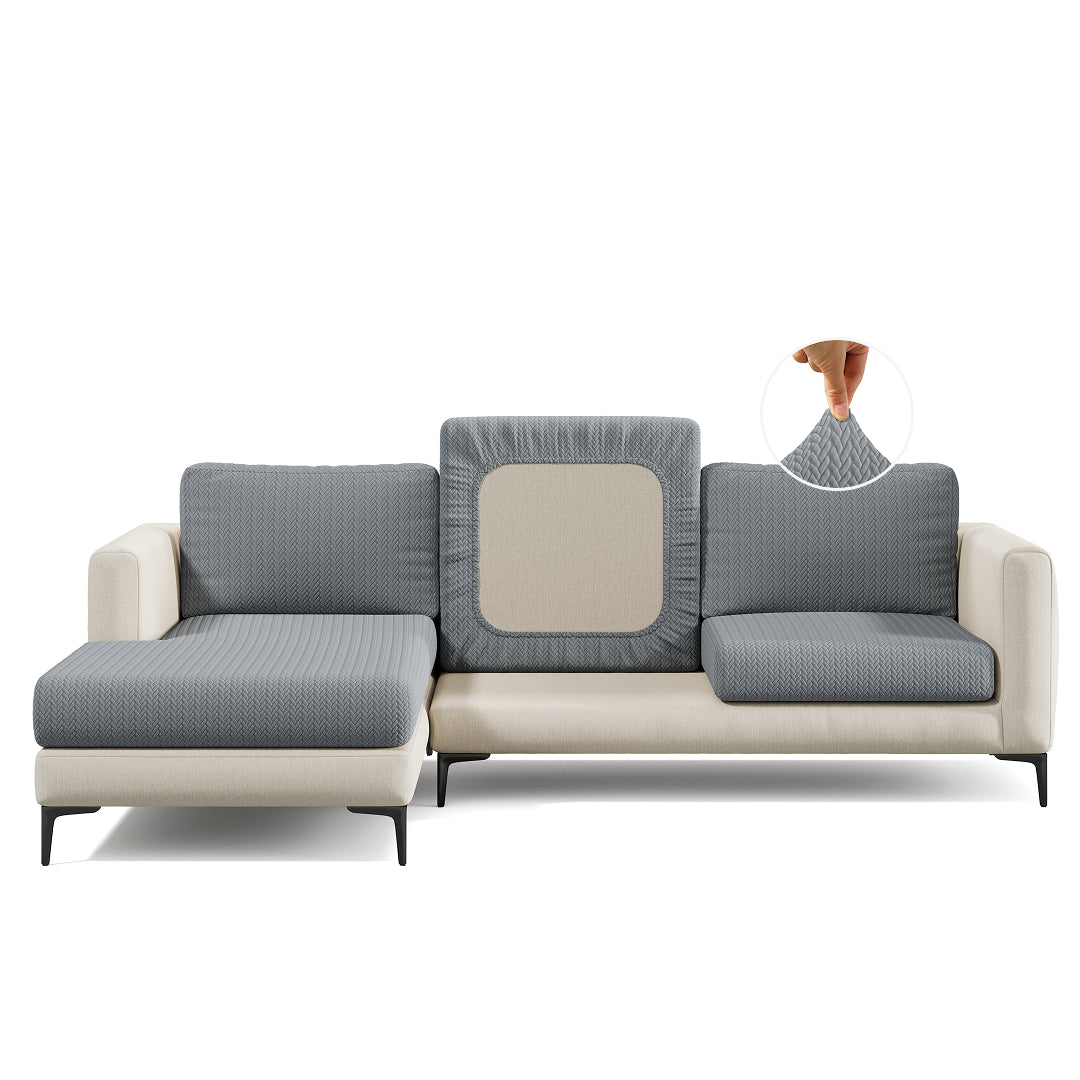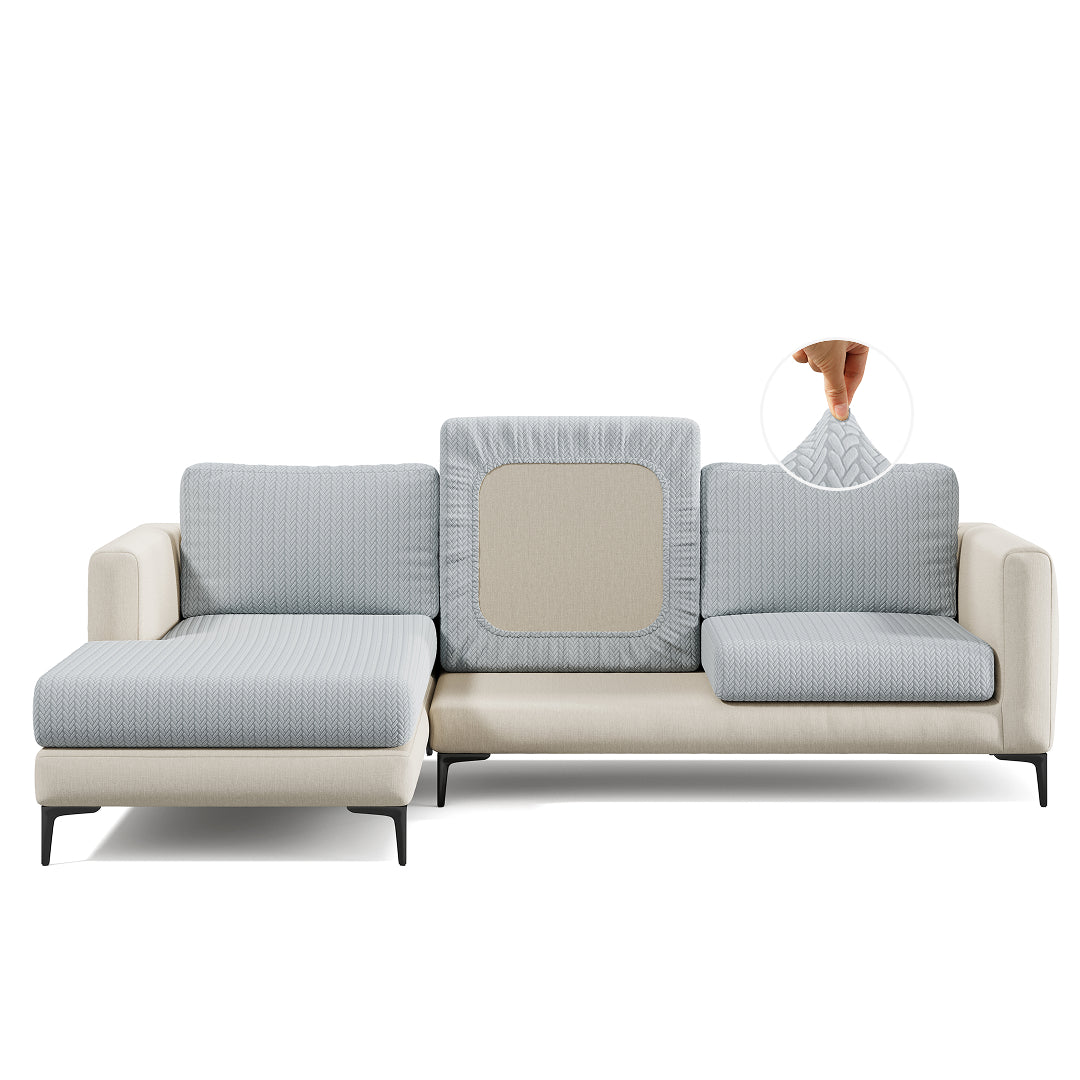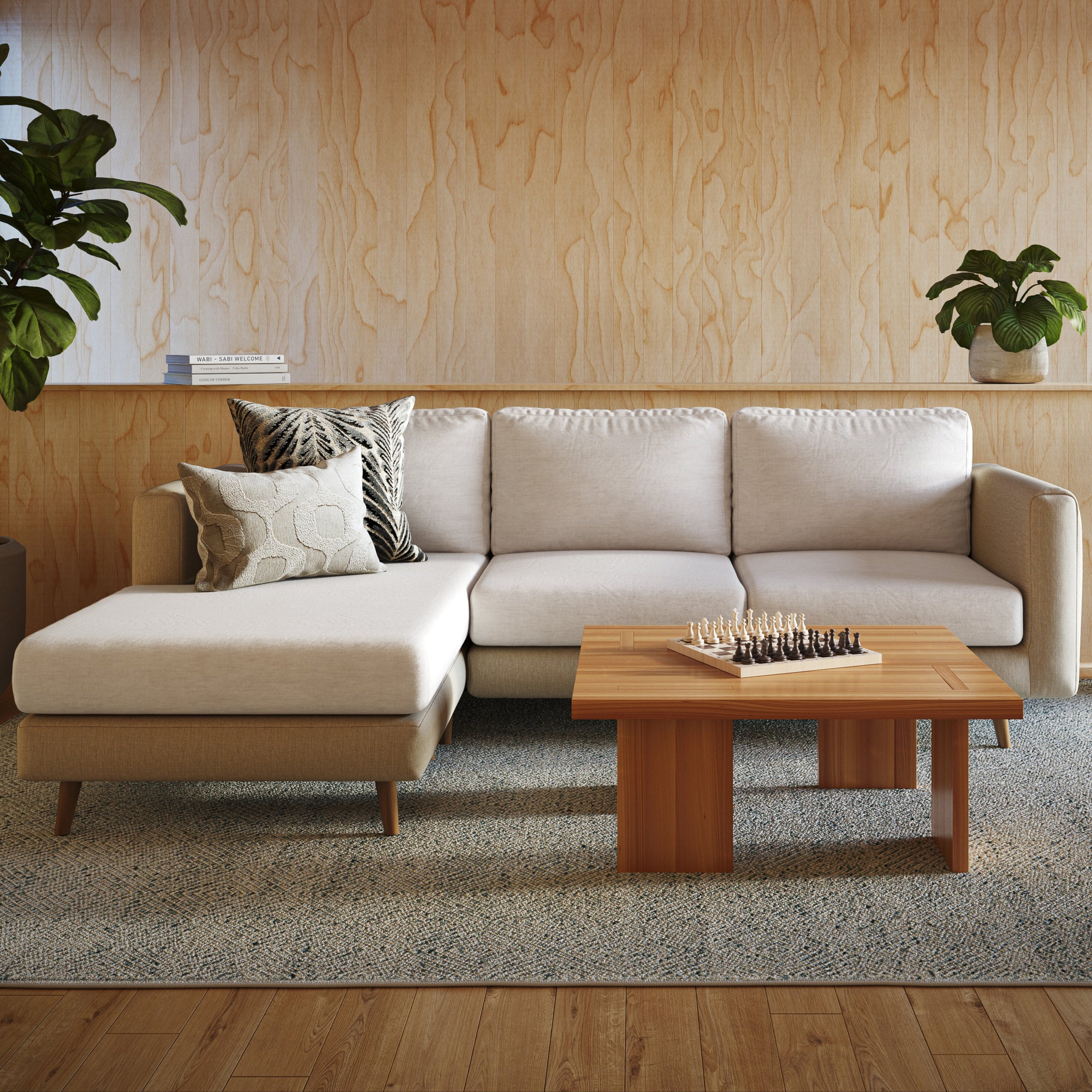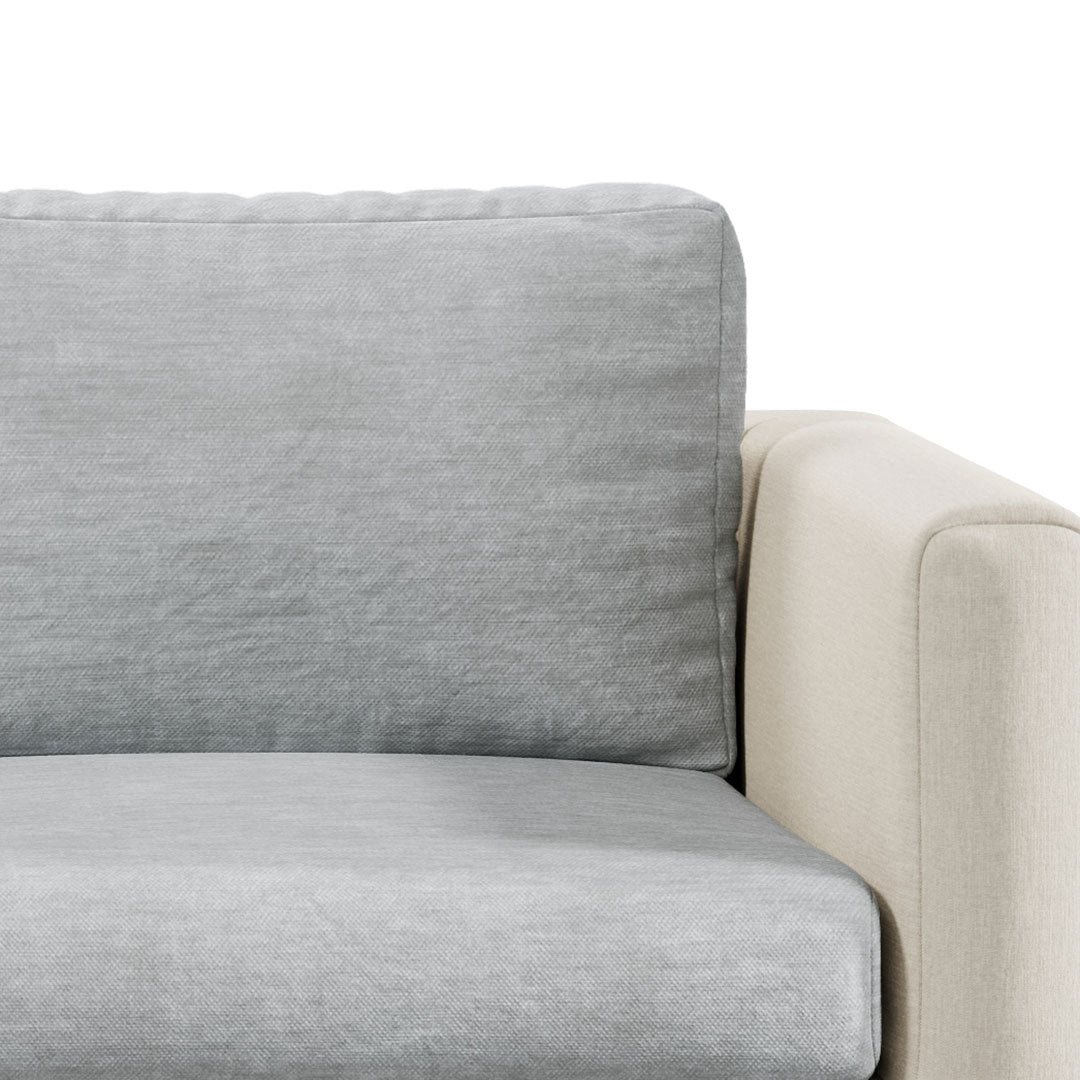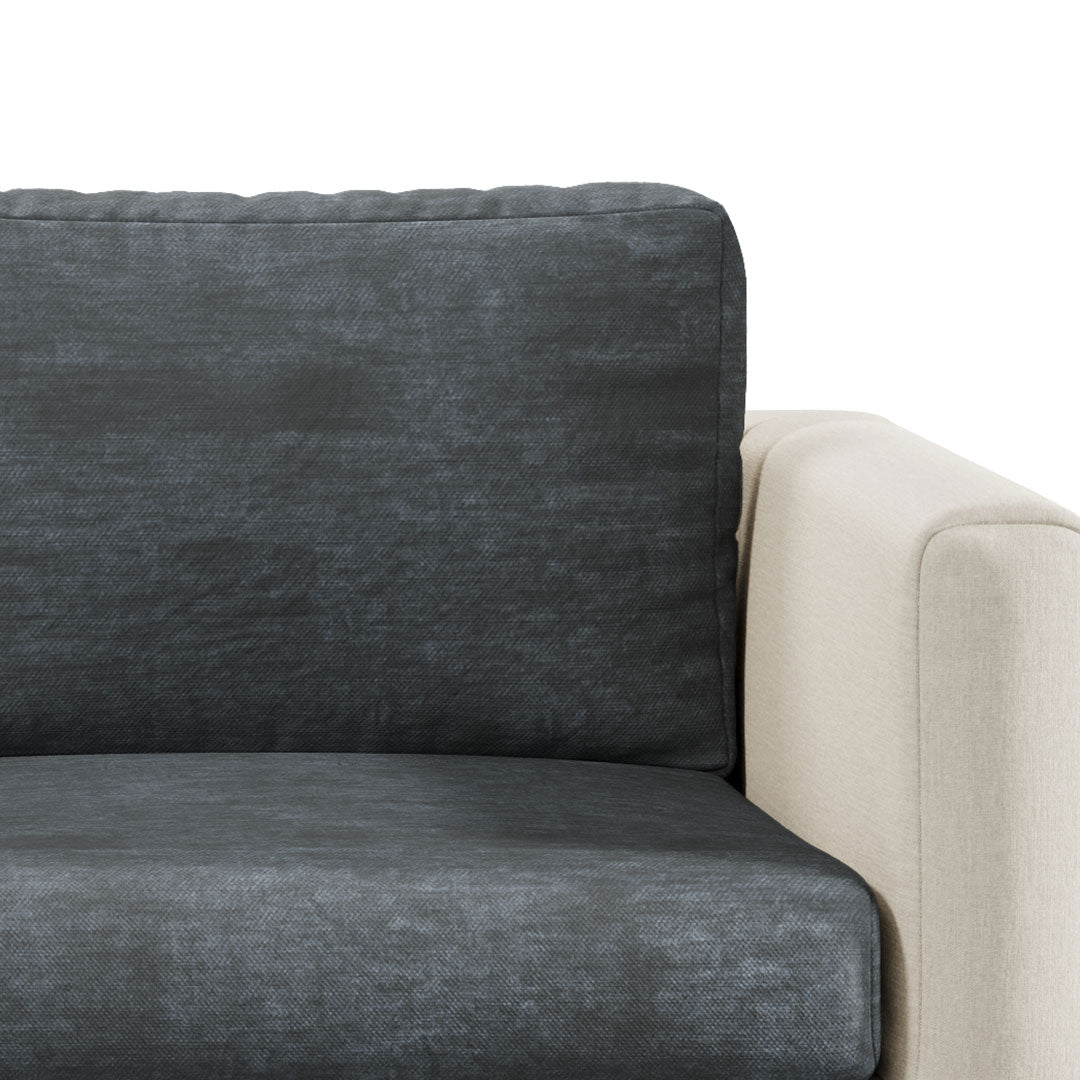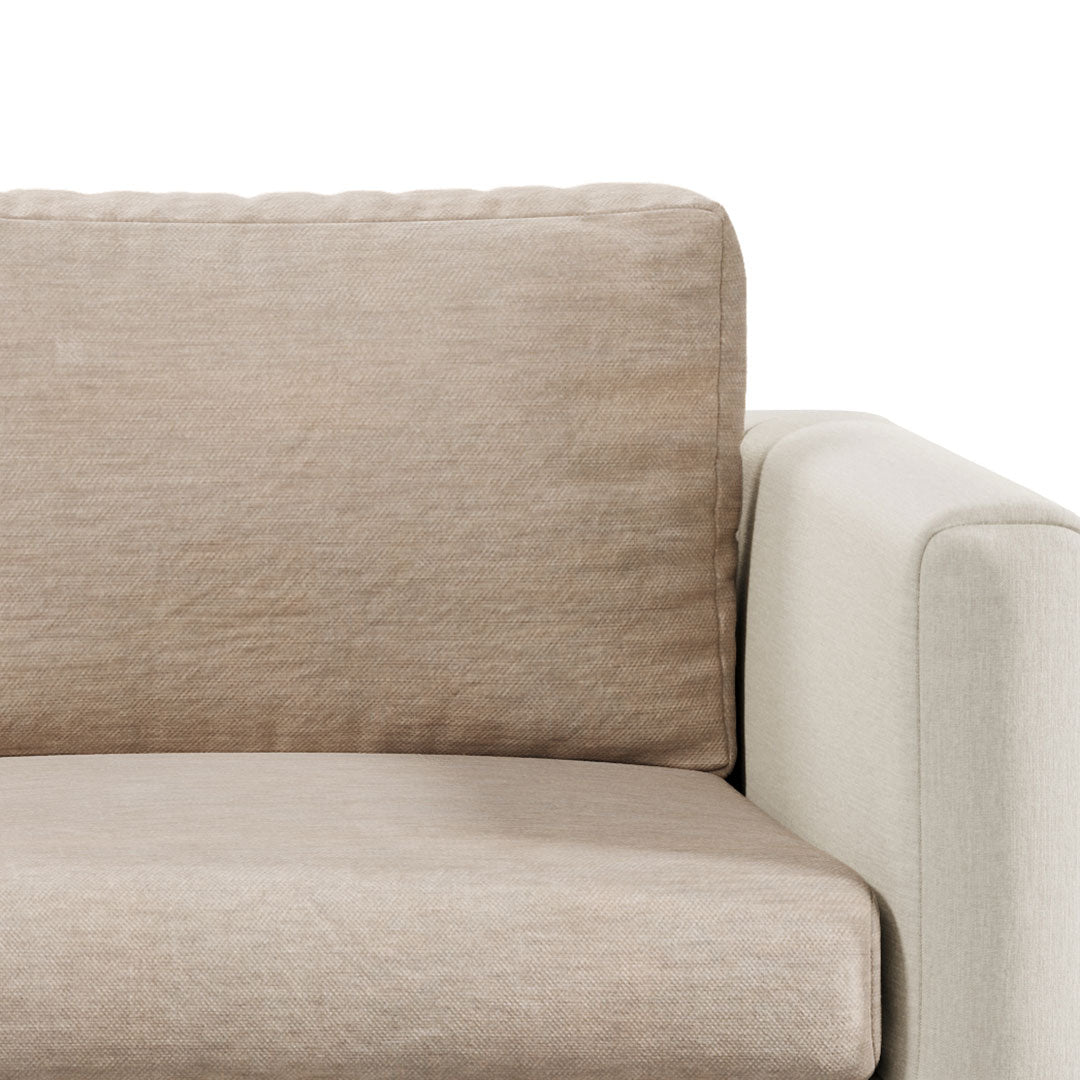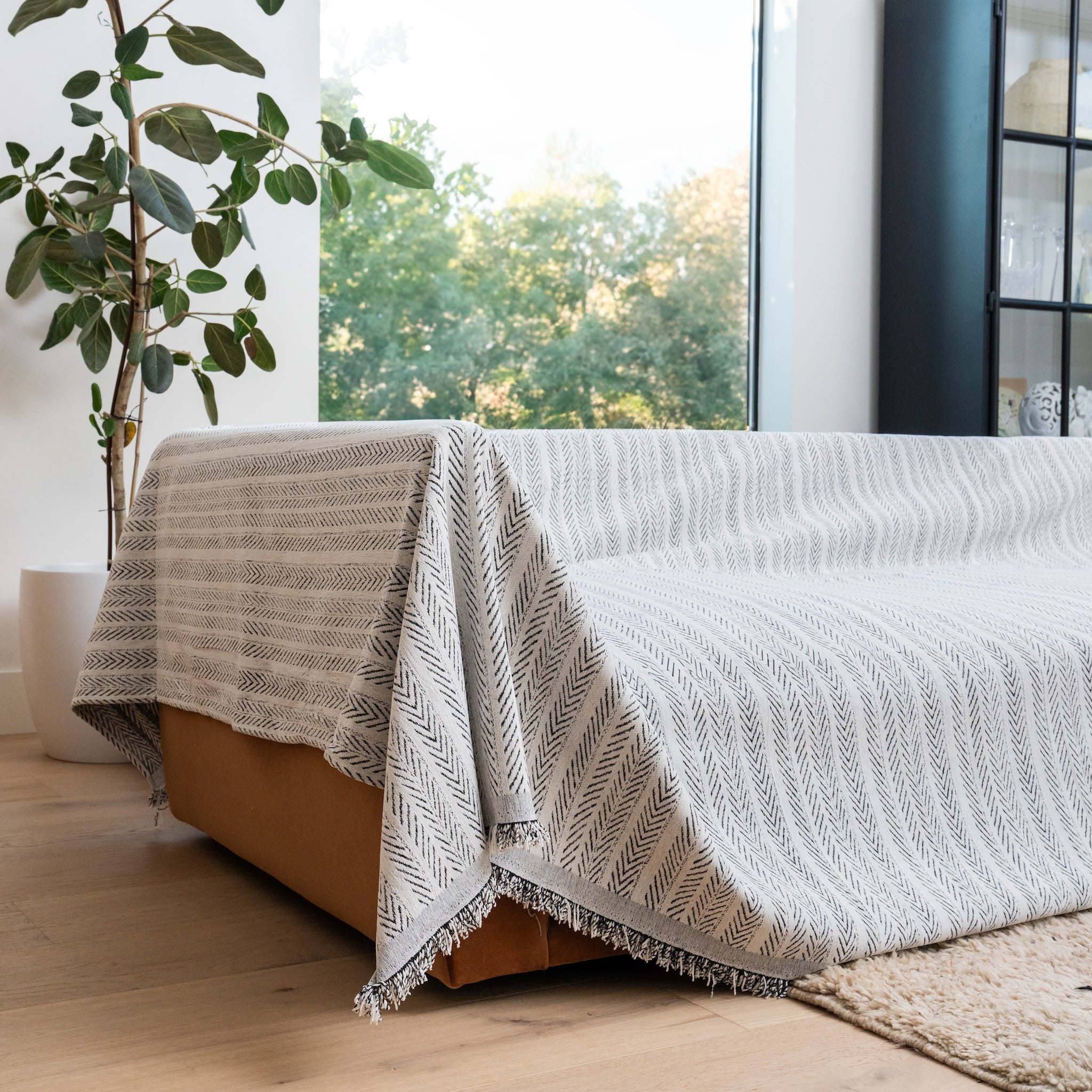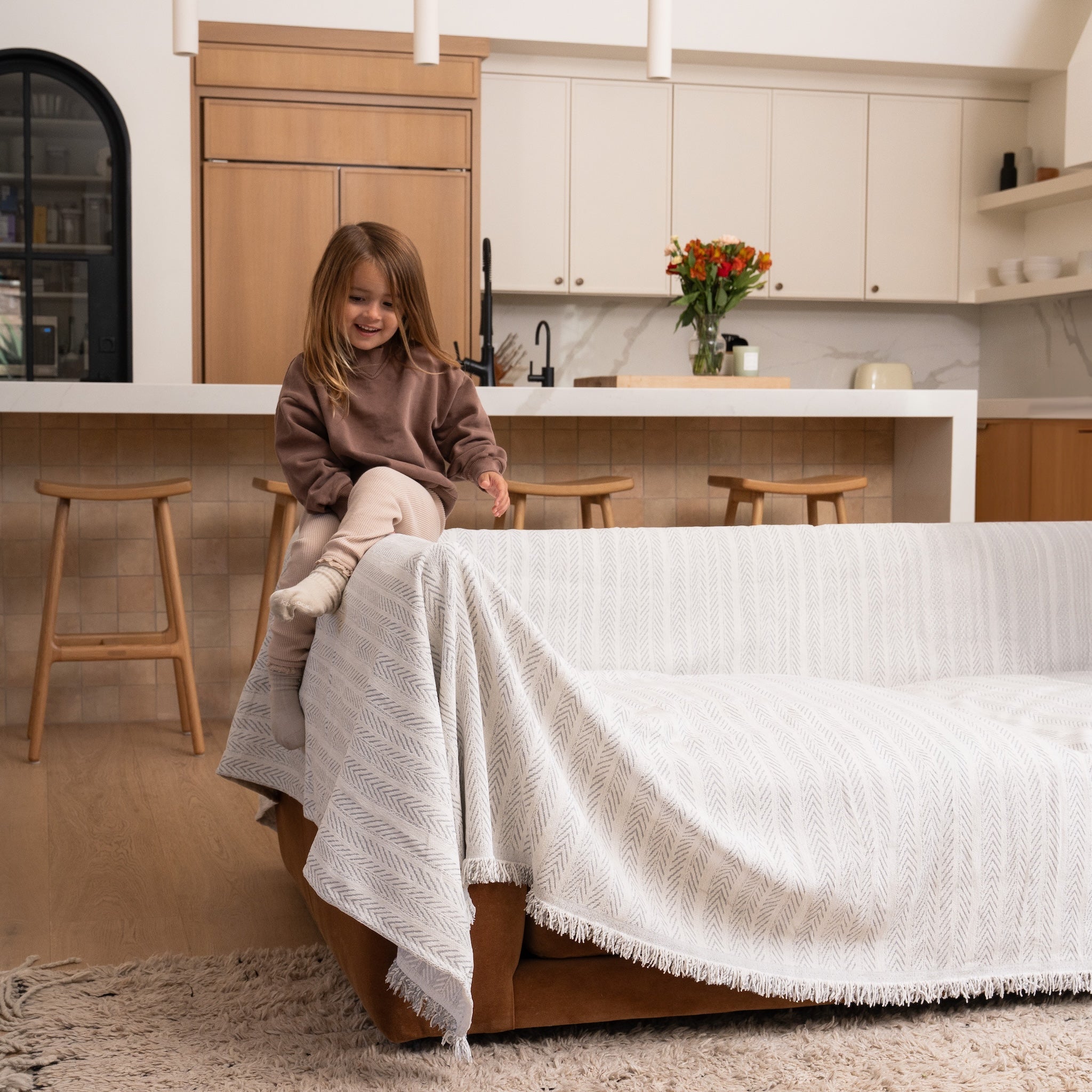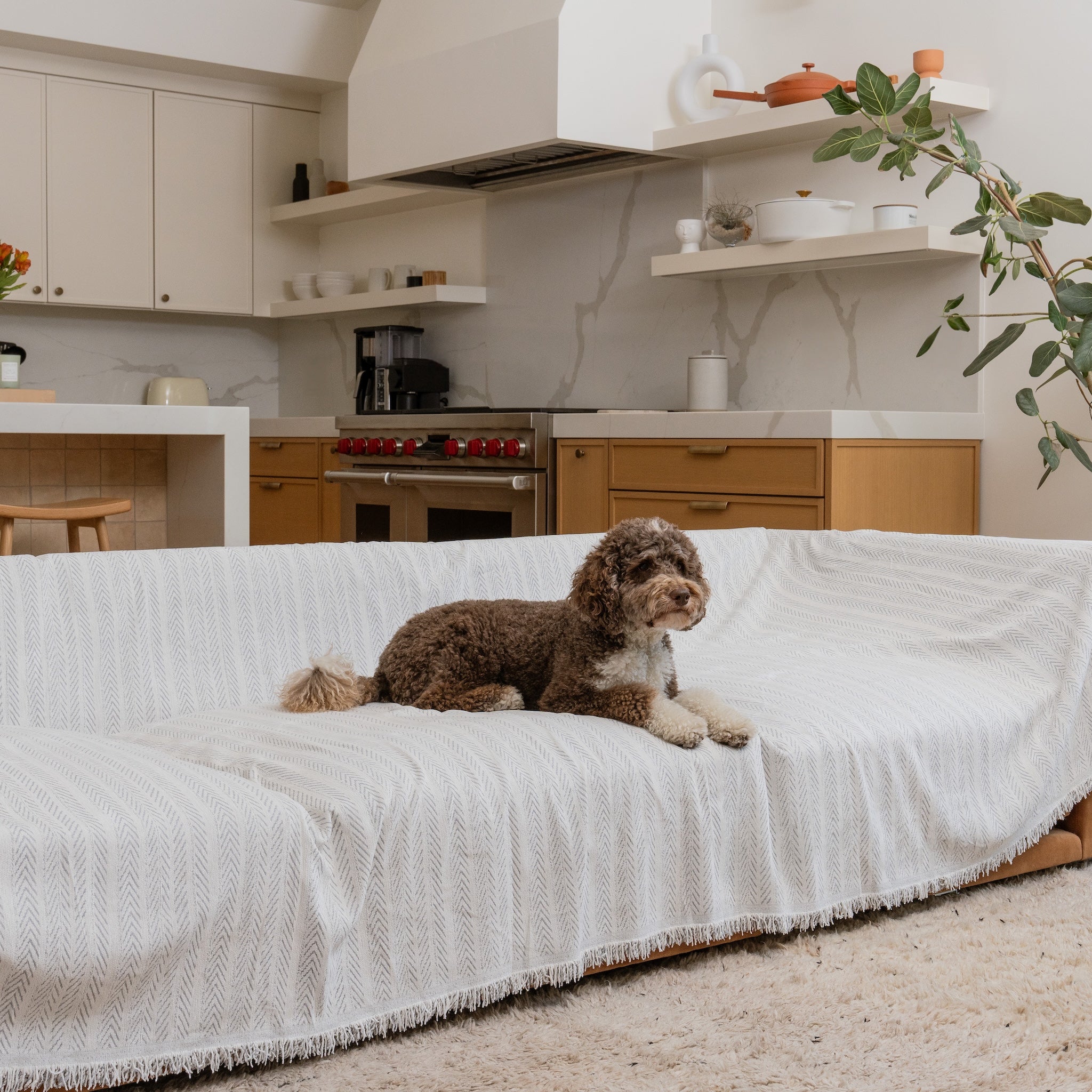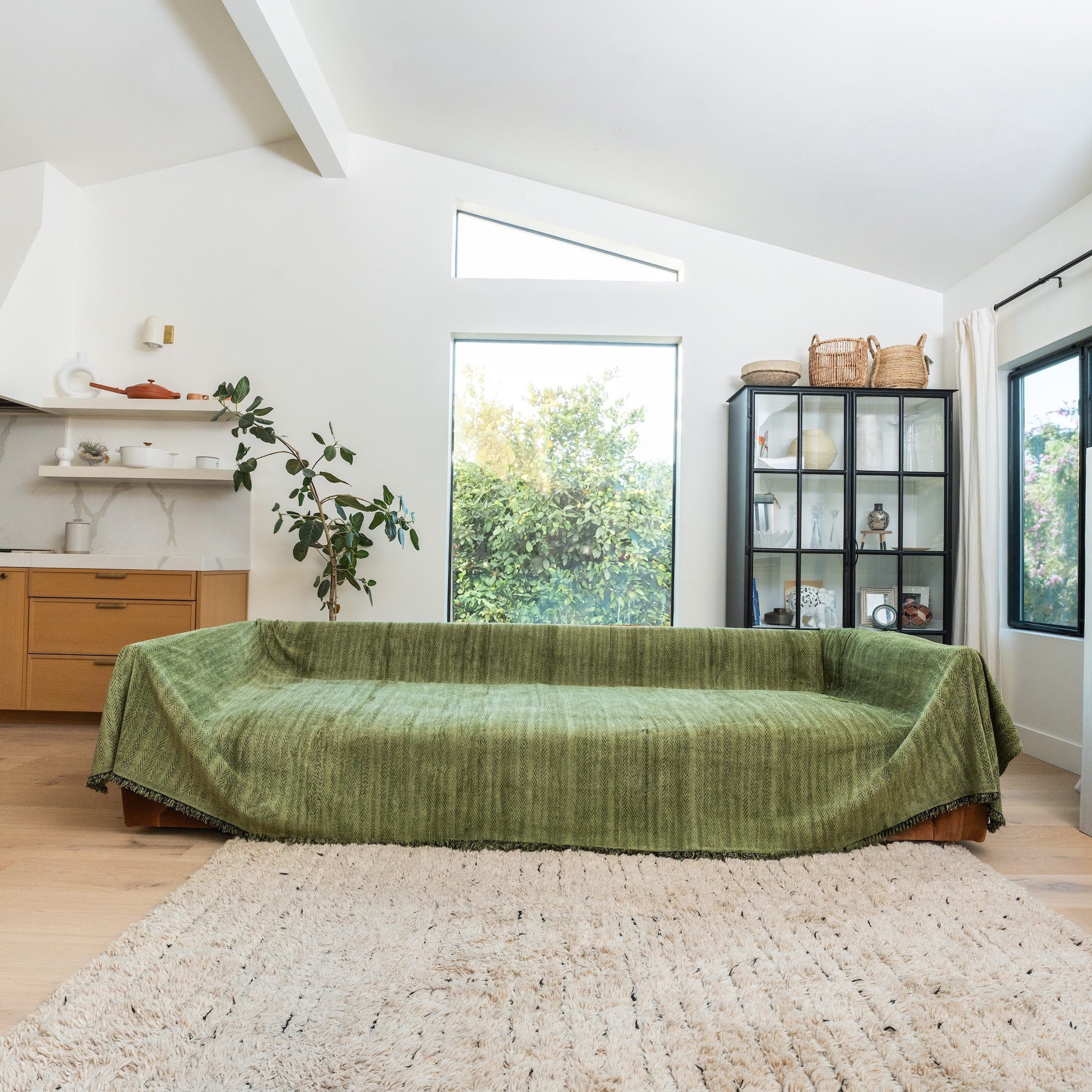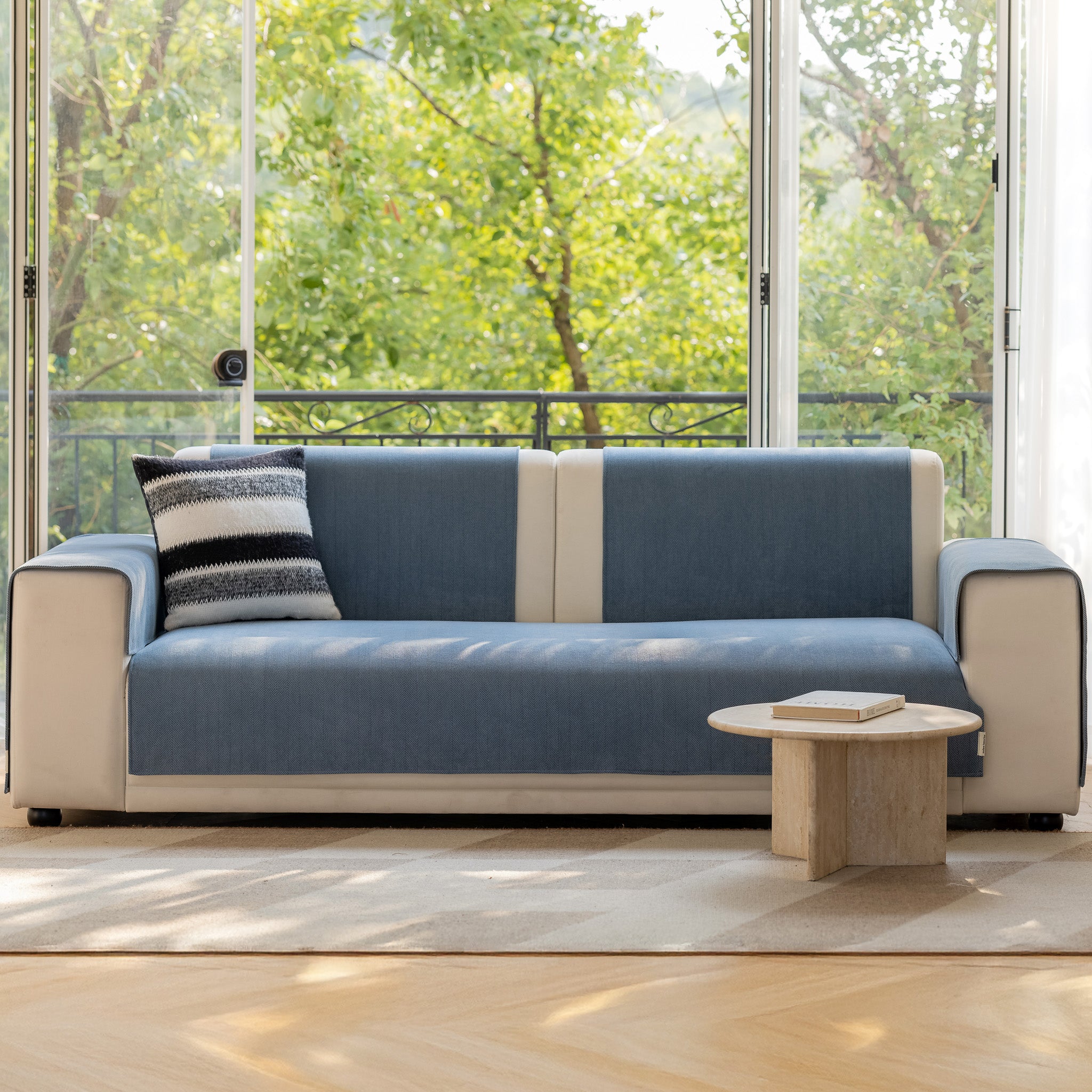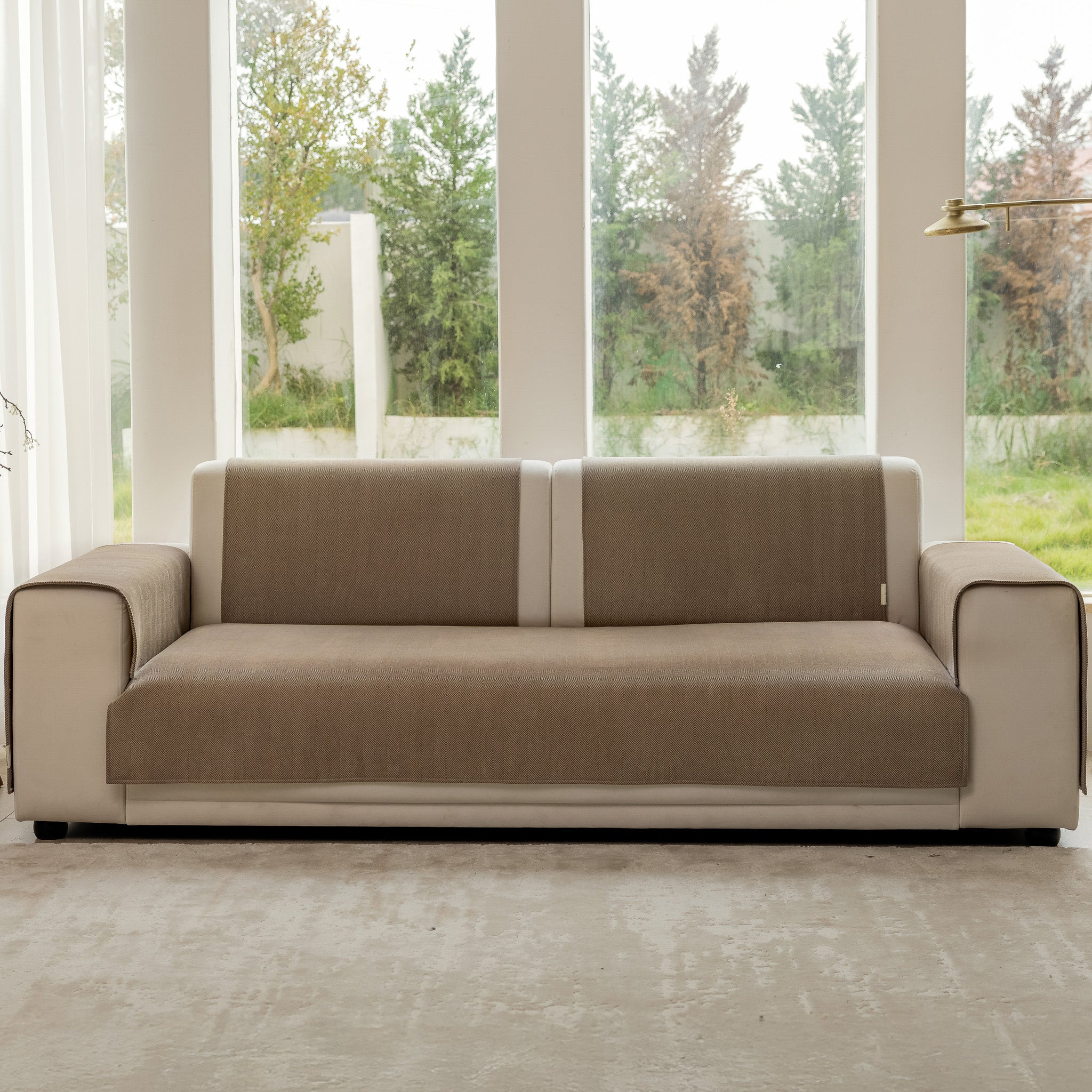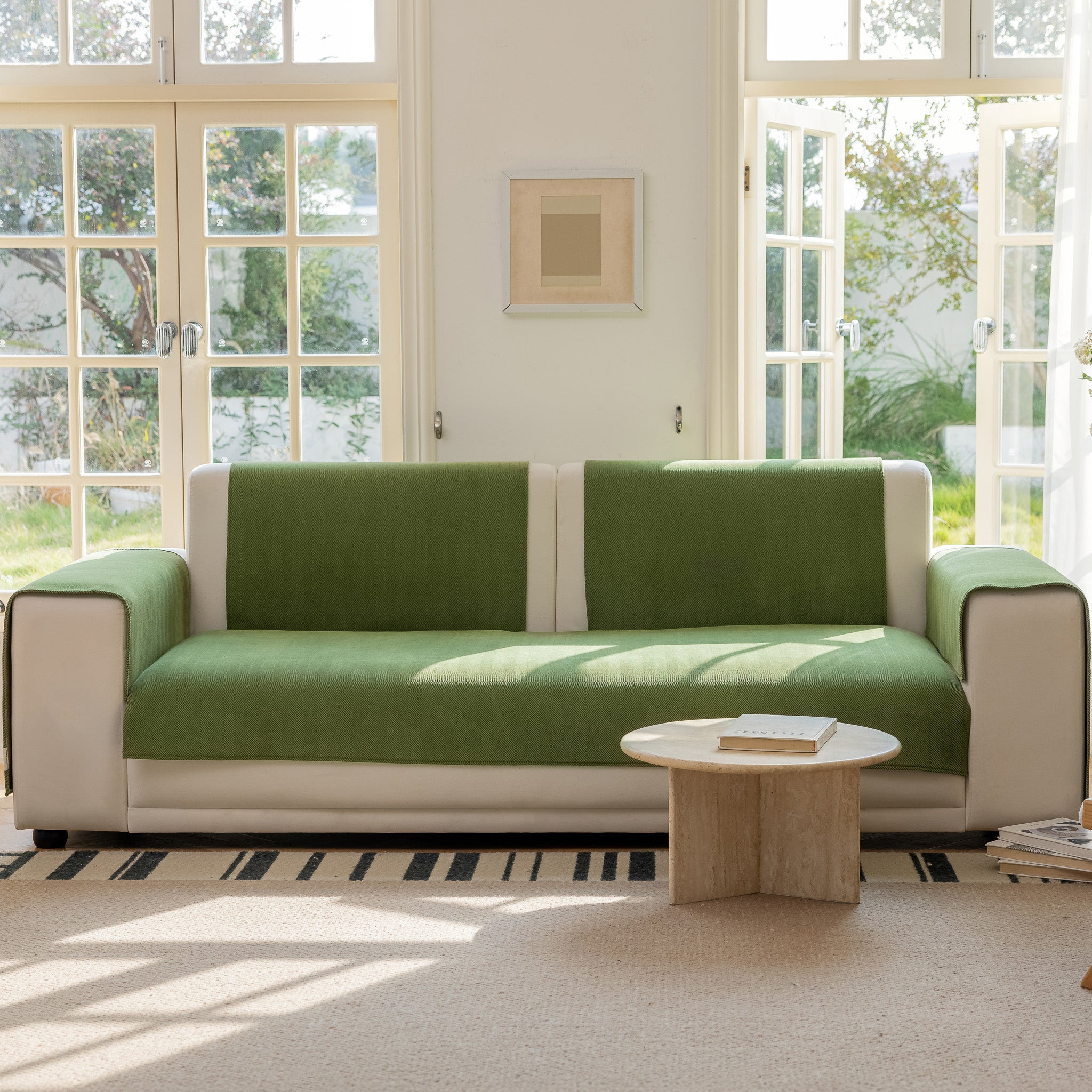As a cat owner, you understand that they come with a lot of love and joy, but also with the occasional downside, like finding your furniture scratched to pieces. Cat scratching is a natural behavior, but that doesn't mean you have to accept the destruction of your favorite couch or chair. We'll discuss some effective methods for protecting your furniture from cat scratching. With a little effort and understanding, you can provide a happy home for both you and your cat.
Your cat isn't scratching your furniture out of malice or spite. Scratching serves several purposes for cats, such as marking territory, stretching muscles, and maintaining nail health. With this in mind, let's explore some practical solutions to protect your furniture while still allowing your cat to engage in this natural behavior.
Use Sofa Covers

Sofa covers are an excellent way to protect your furniture from cat scratching. These protective pet covers are designed to fit snugly over your couch, shielding the fabric from your cat's claws. They're available in a variety of materials, which can withstand your cat's attempts to scratch.
In addition to being practical, our washable sofa covers come in an assortment of colors and patterns, allowing you to maintain your home's aesthetic while keeping your furniture safe. If your cat does manage to scratch the cover, it's far less expensive to replace than repairing or reupholstering the entire couch. Plus, our sofa covers are machine-washable, making them easy to clean and maintain.
Our sofa covers are easy to install, very stretchy, and always stay in place. This allows them to fit most sofas and protect them from spills, stains, or damage.

Sofa covers are an excellent option if you want to protect your furniture without resorting to more invasive methods like trimming nails or applying nail caps. They're also particularly useful for those who rent their homes and may not have the option to replace or reupholster damaged furniture.
For homes with unique furniture shapes, our L-shaped couch covers and U-shaped sectional couch covers offer the perfect fit to ensure comprehensive protection.
Provide Scratching Posts

Cats have a natural instinct to scratch, and providing them with dedicated scratching posts can redirect their behavior away from your furniture. By offering several scratching posts throughout your home, your cat will have ample opportunities to scratch without causing any damage. It's essential to choose scratching posts made from materials that are appealing to cats, such as sisal rope, corrugated cardboard, or carpeting.
To encourage your cat to use the scratching posts, place them near their favorite sleeping spots or near the furniture they're most prone to scratch. You can also use catnip or toys to attract your cat to the new post, creating a positive association with the alternative scratching surface.
When selecting a scratching post, consider your cat's preferences and size. Some cats may prefer taller, more stable posts for stretching and climbing, while others might be content with a smaller, horizontal surface. Having a variety of scratching post options can make it more likely that your cat will leave your furniture alone.
Apply Double-Sided Tape
Double-sided tape is a simple and cost-effective solution for discouraging cats from scratching furniture. Apply the tape to the areas of your furniture where your cat tends to scratch, such as the corners or sides. Cats dislike the sticky sensation on their paws and will be deterred from scratching the taped areas.
You can gradually remove the tape once your cat has stopped attempting to scratch the protected areas. Remember to reinforce the positive behavior by providing alternative scratching options like scratching posts.
While using double-sided tape can be an effective deterrent, make sure to monitor your cat's reaction. Some cats may become more determined to scratch the taped areas, while others might become stressed or frustrated. If you notice that your cat is having a negative reaction to the tape, consider trying one of our other methods in this post.
Trim Your Cat's Nails

Regularly trimming your cat's nails can help reduce the damage caused by scratching. When their nails are shorter and less sharp, cats are less likely to cause significant harm to your furniture. Ideally, you should trim your cat's nails every two to three weeks.
Also consider providing them with a nail file or emery board designed for cats. This can help keep their nails smooth and prevent them from becoming too sharp between trims. Just like with nail trimming, introduce the nail file gradually and create a positive association with the process by rewarding your cat with treats or affection.
Use Furniture Guards

Furniture guards are designed to shield your furniture from your cat's claws. These guards are typically made of durable plastic or vinyl materials and attach to your furniture with adhesive or pins. Furniture guards can be used on sofas, chairs, and other upholstered items, providing an effective barrier against scratching.
When installing furniture guards, ensure that they cover the areas most prone to scratching, such as the corners and sides of your furniture. You can also use furniture guards on wooden surfaces, like table legs or door frames, to prevent your cat from causing damage. These guards are transparent and discreet, so they won't disrupt the aesthetic of your home.
Offer Scratching Mats

Scratching mats are another alternative to traditional scratching posts that can protect your furniture from cat scratching. Made from various materials like sisal, carpet, or cardboard, these mats provide your cat with an appealing surface to scratch. You can place scratching mats on the floor, drape them over the armrest of a sofa, or even attach them to a wall.
Scratching mats are especially useful for cats that prefer horizontal scratching surfaces over vertical posts. Offering a variety of scratching surfaces in your home will increase the chances of your cat choosing these designated areas over your furniture.
Use Citrus or Essential Oil Sprays

Cats are generally sensitive to strong smells, and many don't like the scent of citrus or certain essential oils. You can use this to your advantage by creating a homemade spray using diluted citrus juice or essential oils like lavender, eucalyptus, or rosemary. Lightly mist the solution onto the areas of your furniture that your cat tends to scratch.
Before using any spray, test it on a small, inconspicuous area of your furniture to ensure it doesn't cause damage or discoloration. Also, make sure that the essential oils you're using are safe for your cat, as some can be toxic to pets.
You’ll need to reapply the essential oils regularly to maintain their effectiveness. If you're concerned about constantly spraying your furniture, you might consider using scent-based deterrents in combination with other methods, such as furniture guards or scratching posts, to provide a more comprehensive solution.
Reward Good Behavior

Positive reinforcement is a powerful tool for training your cat to scratch designated areas and leave your furniture alone. When you notice your cat using a scratching post or mat, offer praise, treats, or affection as a reward. This reinforcement will encourage your cat to continue using the appropriate scratching surfaces.
You need to be consistent with your rewards to establish a strong connection between the desired behavior and the positive reinforcement. Avoid punishing your cat for scratching your furniture, as this can lead to fear and confusion.
Creating a consistent routine can also help reinforce positive behavior. Schedule regular play sessions and interactions with your cat, making sure to incorporate scratching posts or mats into these activities. By incorporating designated scratching surfaces into your cat's daily routine, they'll be more likely to use them instead of your furniture.
Rotate Toys and Activities

Cats are more likely to scratch furniture when they're bored or seeking stimulation. By providing a variety of toys and activities for your cat, you can redirect their energy and reduce the likelihood of destructive behaviors. Rotate your cat's toys regularly to maintain their interest and engage them in interactive play sessions to expend their energy.
Consider getting puzzle toys, interactive feeders, or even cat trees to offer your cat mental and physical stimulation. A well-engaged cat is less likely to seek out your furniture as a source of entertainment.
Provide your cat with a stimulating environment that encourages exploration and play. Create vertical spaces with shelves or cat trees, and offer hiding spots like cardboard boxes or tunnels. By keeping your cat engaged and entertained, you can minimize the chances of them resorting to furniture scratching out of boredom or frustration.
Consider Soft Paws Nail Caps
Soft Paws are silicone nail caps designed to cover your cat's claws, preventing them from causing damage when they scratch. These nail caps are easy to apply and typically last for four to six weeks before needing replacement. Soft Paws are available in various sizes and colors, allowing you to choose a set that suits your cat's needs and style.
Some cats may not tolerate the nail caps well, so it's important to monitor your cat's comfort and reactions after application.
If your cat is receptive to Soft Paws, they can be an effective way to protect your furniture without restricting your cat's natural scratching behavior. Keep in mind that nail caps will need to be replaced regularly, so you'll want to have a supply on hand to ensure continuous protection for your furniture.
Conclusion
Protecting your furniture from cat scratching can seem like a daunting task, but with the right strategies and patience, it's entirely achievable. Remember that consistency, positive reinforcement, and understanding your cat's natural instincts are the keys to success. With time and effort, you'll find the perfect balance that allows your cat to engage in healthy scratching behaviors while keeping your furniture safe and intact.
It's also essential to remember that each cat is unique, and what works for one may not work for another. Be prepared to experiment with different methods and strategies until you find the right combination that works for your specific situation.
By following these tips and staying persistent in your efforts, you'll be well on your way to protecting your furniture and maintaining a happy, scratch-free home for both you and your cat.

